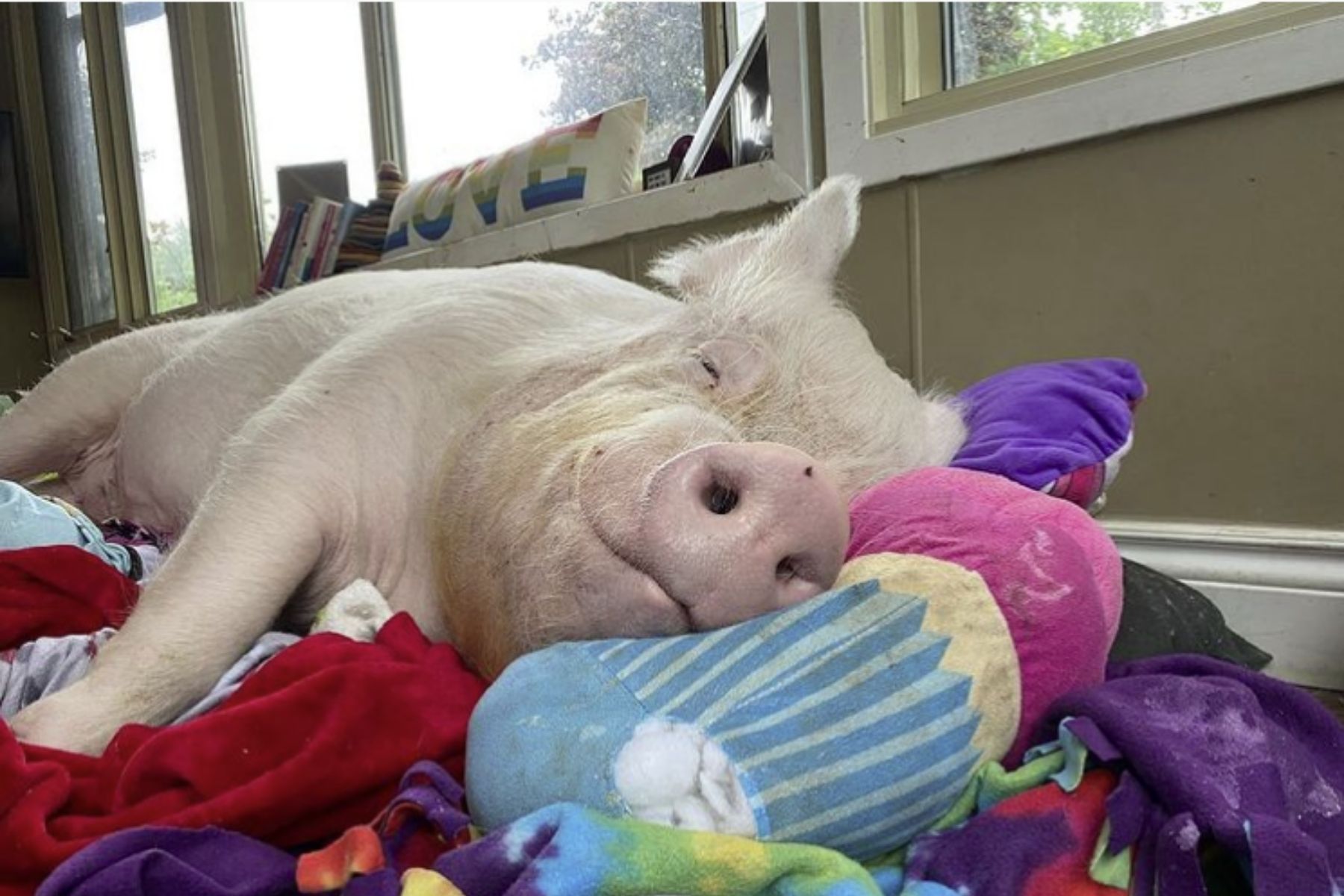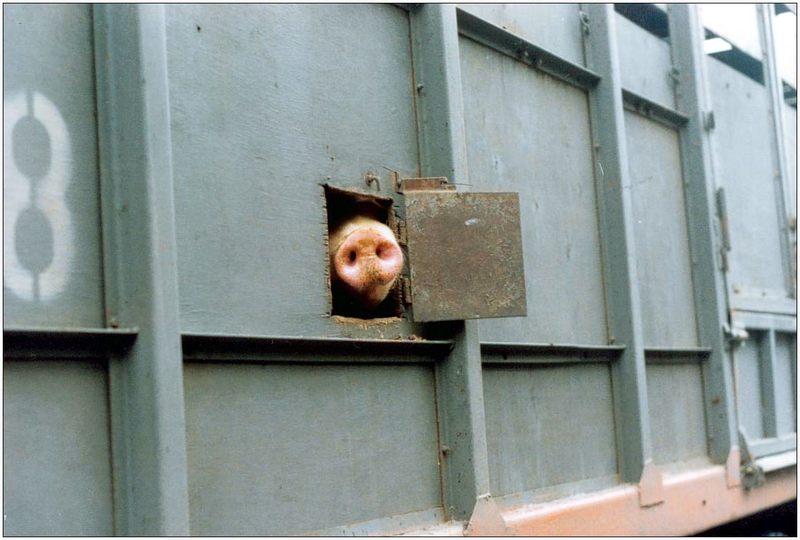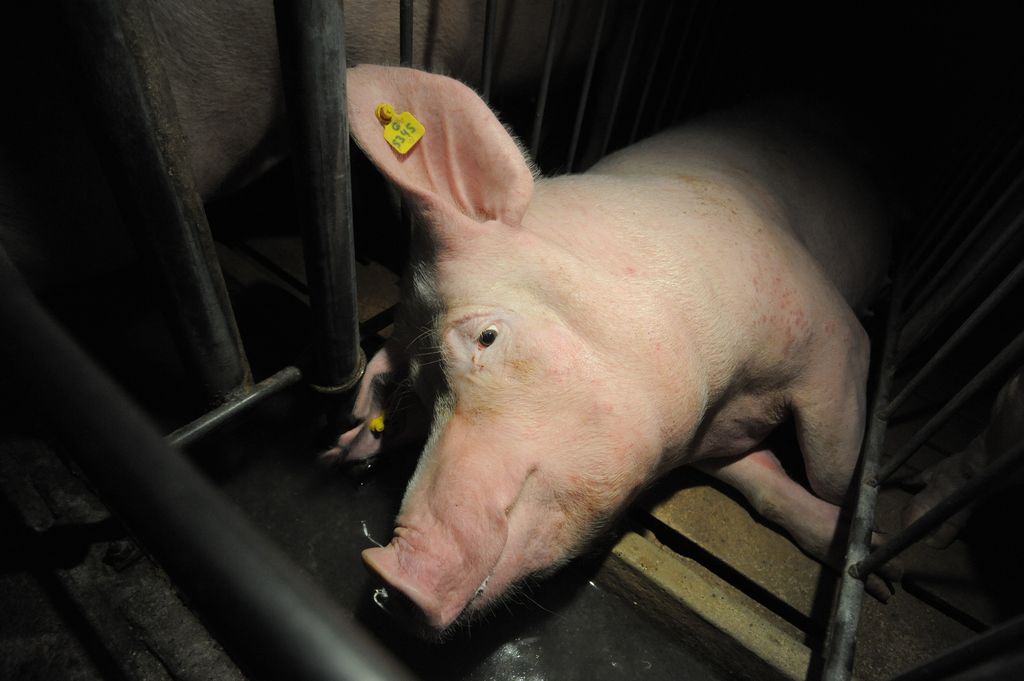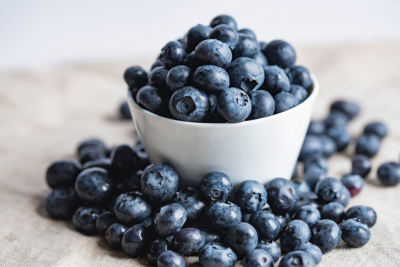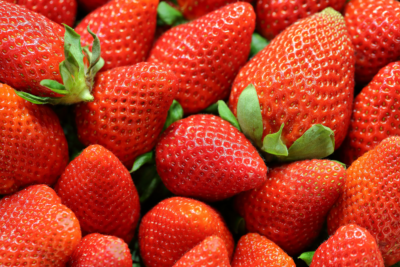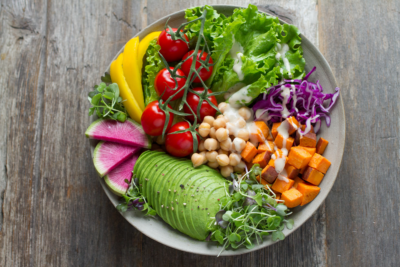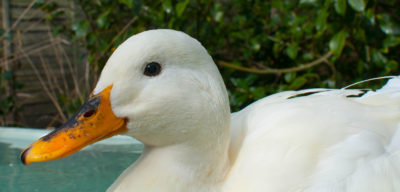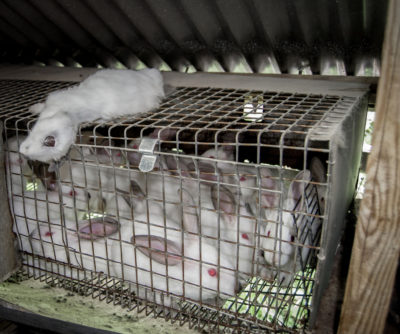Pigs suffer on factory farms. Learn more about this cruel industry below.
Meet Esther
If you think there is something fundamentally different about farmed animals than, say, a dog or a cat, then you probably haven’t met Esther the Wonder Pig. Esther was bought as a pet micropig but she turned out to be the same huge breed of pig that is reared for meat on farms worldwide. Esther was a huge character, loved to sleep, eat, run in the fields, and cuddle up with the dogs, cat, and humans in her family.
Esther was given the chance to show her intelligence, personality, and zest for life, but all pigs have the same capabilities as her.
They are more intelligent than the dogs with whom we share our homes, and can solve problems as well as chimpanzees. Pigs can also learn words and phrases, be house trained, and even play computer games. We just don’t give them the chance to do so.
Pigs suffer on farms
Most pigs in the US are reared on intensive farms. For those used for breeding, their life is a cycle of forced impregnations followed by months spent in a crate barely larger than their bodies. Very soon after birth, their piglets are taken from them, and the cycle begins again.
Two types of crates are used on a typical US pig farm: Pregnant pigs are first put into highly restrictive metal gestation crates, which are so small that they are unable to turn around or lie down comfortably. While some states have banned gestation crates, the latest available USDA data shows that over 76% of pigs are raised in total confinement.
Once mother pigs are close to giving birth, they are moved to farrowing crates where the piglets will be delivered and nursed. Farrowing crates are only slightly larger than gestation crates, adding a restrictive attachment through which the piglets can nurse. Deprived of the ability to nuzzle her piglets or even turn around to see them, she has enough room only to stand and lie down. Farrowing crates are widely used by all major pork producers.
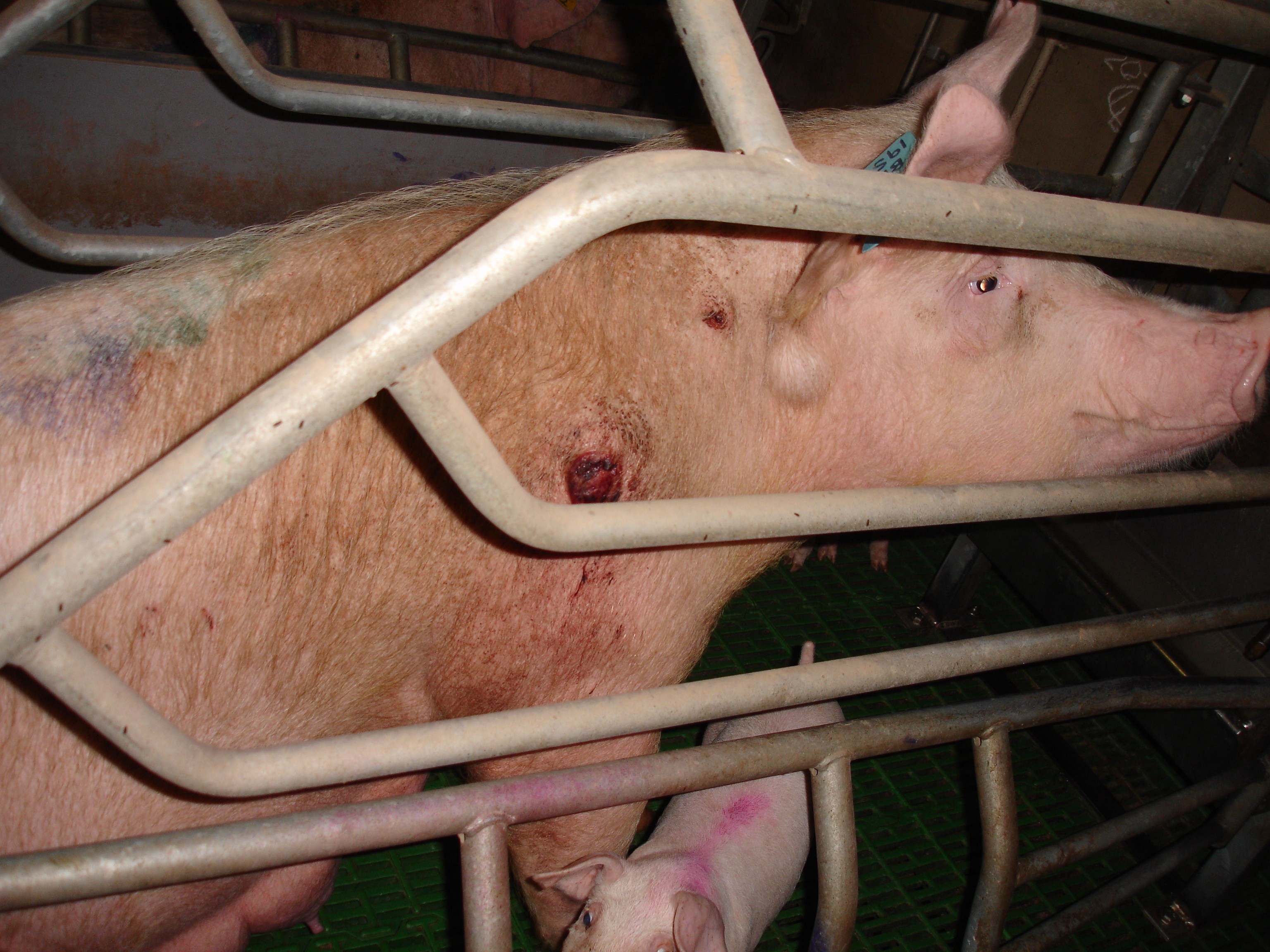
In the wild, pigs would find a private place, and build a nest in which to give birth. On farms, all they have are the metal bars that prevent them moving and a concrete floor that causes painful pressure sores. In desperation, they go through the motions of nest-building inside their cage but it is, of course, utterly futile.
When born, the piglets suckle from their mother but she is not able to reach them and nuzzle them. If they are sick, all she can do is watch them die. She will be kept in this confinement until the young are taken from her. She will be returned to a pen, and will soon be impregnated again.
And again, and again, until she is exhausted and her body can no longer endure the strain. Then she will be sent to slaughter as a ‘cull sow’, and her body turned into low-quality products like hot dogs and sausages.
Keeping pigs alive in the filth and squalor of factory farms requires a lot of veterinary medication. This shocking photo was taken by Animal Aid investigators at a Somerset pig farm in the UK (though it could just as easily have been a US factory farm).
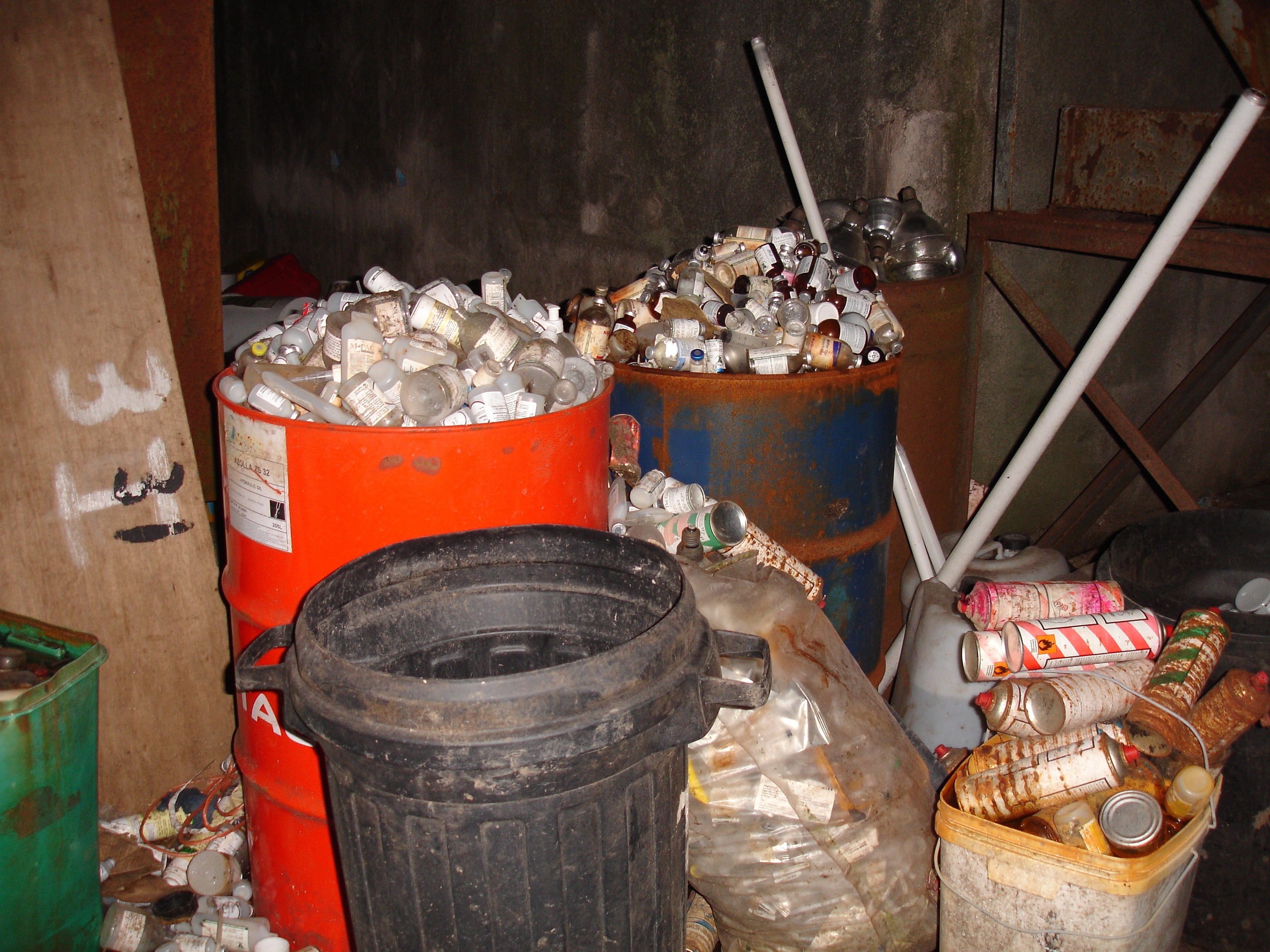
Piglets suffer too
Pigs have been bred to have as large a litter as possible, and many of their piglets are still-born or die at birth, or soon after. They rarely receive veterinary care. Investigators have found their tiny bodies abandoned in the aisles of the units and dumped in garbage bags.
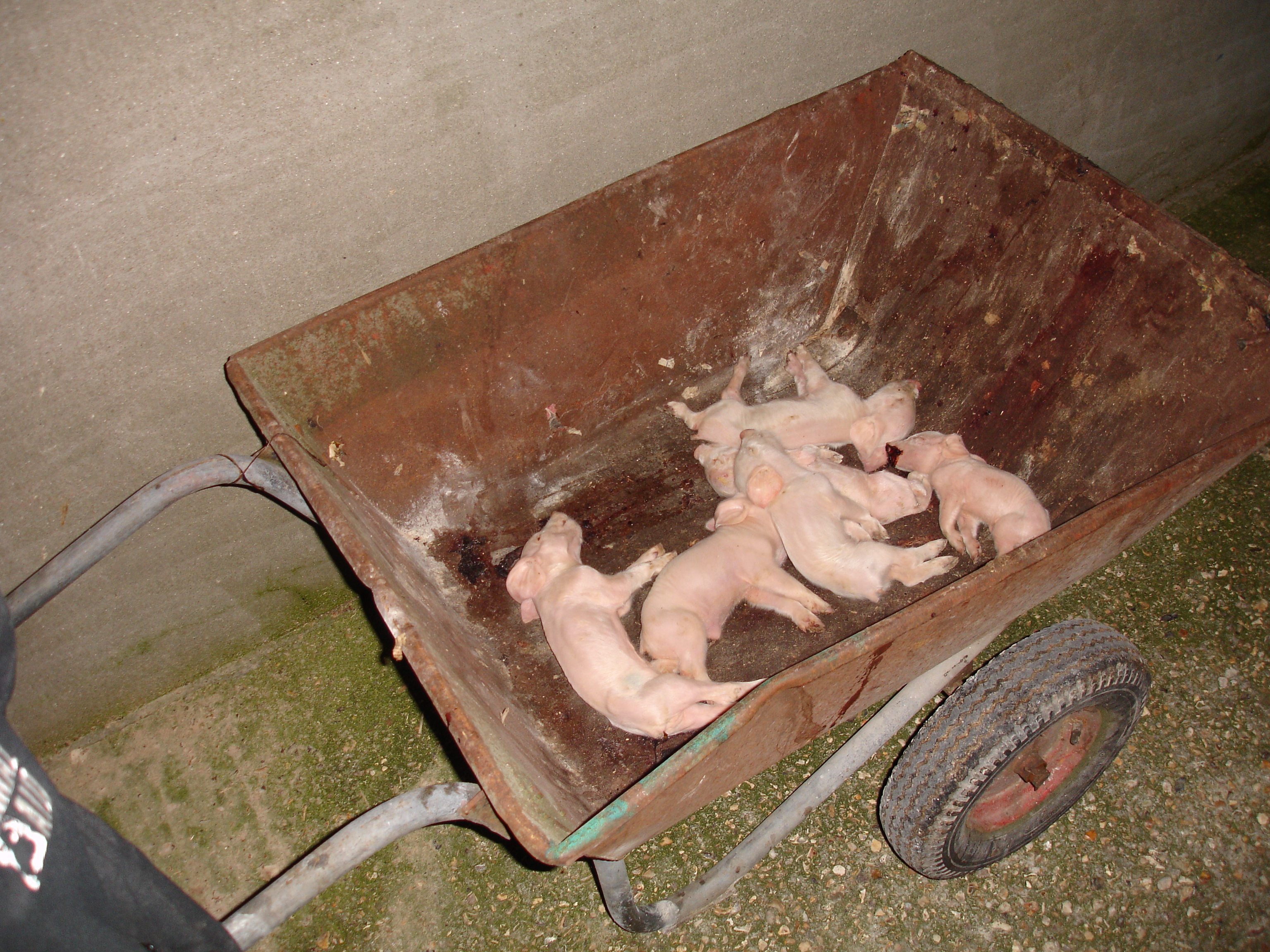
In nature, weaning is a gradual process, often taking three to four months. On farms, the early separation between mother and piglets causes distress to them both. It is quite common for them to call out to one another in the vain hope of being reunited.
At this stage, most piglets in the US will have their tails docked with hot or cold pliers. No sort of anesthetic is required.
They will also have their teeth clipped or ground down. The pig industry claims that such procedures are necessary to prevent piglets from injuring each other. However, pigs rarely harm one another when living wild. It is a problem related to their stressful living conditions where overcrowding and boredom is rife.
Most males piglets in the US also are castrated, which means they have their testicles cut off without anesthetic. Pork producers claim that the practice prevents ‘boar taint’ (an unpleasant taste of a mature male pig’s flesh).
Live transportation
It is often said that we need more slaughterhouses to stop the long-distance transportation of live animals. But animals are slaughtered where they reach the best price, and that is why it is common for pigs farmed in Aberdeen to be sent to slaughter in Essex.
They are transported these long distances in all weathers, frequently with poor ventilation and temperature control. Pigs are sensitive to high temperatures and humidity and, because they only sweat through their snouts, are prone to dehydration and heat stroke.[5] These stressful journeys are utterly inhumane.
At the slaughterhouse
While a pig’s natural life span is about 15 years, pigs on factory farms are selectively bred to grow extremely fast and reach “slaughter weight” in just 6 months. Slaughterhouses in the US can slaughter up to 1,106 pigs per hour.
Pigs should be stunned before slaughter, either with an electric current through their brains or by being immersed in a gas. Neither method is guaranteed to be effective, and undercover investigations have documented pigs clambering over one another inside the gas chambers gasping for breath.
After stunning, pigs are shackled and hoisted upside down by their back legs. Their throats are then slit. It is not illegal to slaughter pigs in front of one another.
A kinder way
Around 129.9 million pigs are slaughtered every year in the US, each of them with a character as big as Esther’s, and with their own individual personality traits, and their own friendships and preferences.
Pigs are like dogs in many ways. They are playful and fun-loving, intelligent and quick to learn. Imagine just for a moment that we kept dogs in cages inside the filth of a factory farm. That we gave them nothing to do, denied them their basic needs, and never let them see the sun or breathe fresh air.
And then, when we had made them too weak to breed from, we painted a cross on their backs and shipped them long distance to the slaughterhouse. We just wouldn’t do it. So, why do we do it to pigs?
Why not choose a kinder alternative and try vegan with us? It’s free to take part, and we’ll send you meal plans, nutrition tips, and much more to support you along the way.

